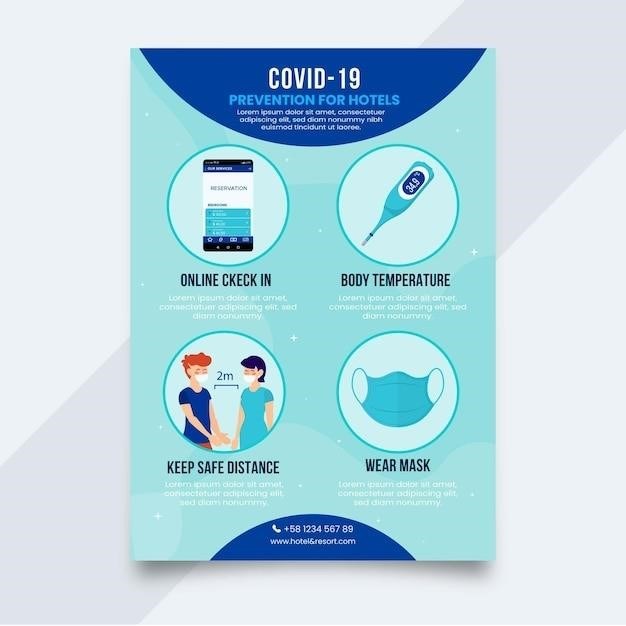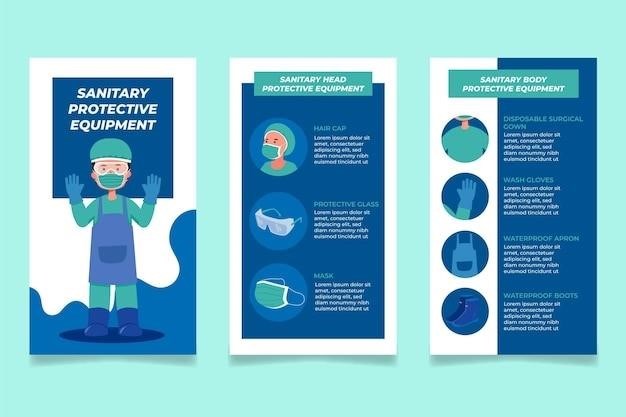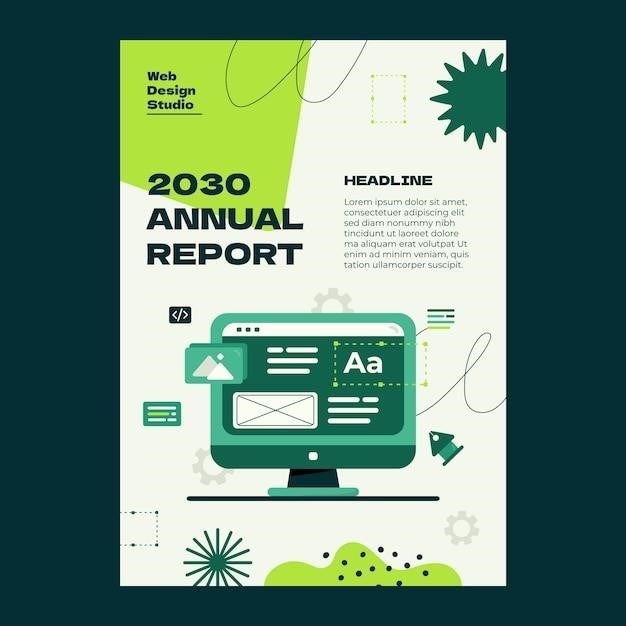Acticoat Antimicrobial Barrier Dressing⁚ A Comprehensive Overview
This article provides a detailed overview of Acticoat Antimicrobial Barrier Dressing, a widely used wound care product. It delves into its mechanism of action, indications for use, different variants, clinical evidence, antimicrobial efficacy, benefits, comparison with other silver dressings, safety considerations, and a concluding summary. The information presented is intended to provide a comprehensive understanding of Acticoat and its role in wound management.
Introduction
In the realm of wound care, antimicrobial dressings play a crucial role in promoting healing and preventing infection. Among the various options available, Acticoat Antimicrobial Barrier Dressing has emerged as a prominent choice due to its unique properties and proven efficacy. This comprehensive overview delves into the intricacies of Acticoat, exploring its composition, mechanism of action, and clinical applications. The information presented is derived from a meticulous analysis of available literature and product information, providing a robust foundation for understanding the significance of Acticoat in modern wound management.
Acticoat, a product of Smith & Nephew, has gained widespread recognition for its ability to provide sustained antimicrobial protection against a broad spectrum of pathogens. Its innovative nanocrystalline silver technology, coupled with a range of substrate types, makes it adaptable to a variety of wound types and clinical scenarios. This document serves as a comprehensive guide to Acticoat, encompassing its key features, indications, clinical evidence, and safety considerations. It aims to equip healthcare professionals with the knowledge necessary to confidently utilize Acticoat in their practice, ultimately contributing to improved patient outcomes.
The information presented in this document is intended for educational purposes only and should not be considered a substitute for professional medical advice. For specific guidance on the use of Acticoat, healthcare providers should consult the product’s Instructions for Use (IFU), which provides detailed information on application, dressing changes, and potential adverse effects.
What is Acticoat?
Acticoat Antimicrobial Barrier Dressing is a versatile wound care product designed to provide sustained antimicrobial protection against a broad spectrum of pathogens. It is manufactured by Smith & Nephew and utilizes a proprietary nanocrystalline silver (NCS) technology, which distinguishes it from traditional silver dressings. The NCS technology involves the use of silver nanoparticles, which are significantly smaller than those found in conventional silver dressings. This unique feature enhances the surface area of the silver, allowing for greater interaction with wound exudate and a more effective antimicrobial action.
Acticoat is available in a variety of substrate types, each tailored to specific wound characteristics and clinical needs. The most common types include Acticoat 7, Acticoat Flex 3, and Acticoat Flex 7, each offering varying levels of antimicrobial protection and absorbency. The Acticoat 7 dressing is designed to provide up to 7 days of antimicrobial protection, while Acticoat Flex 3 and Acticoat Flex 7 offer 3 and 7 days of protection, respectively. These variants are further differentiated by their flexibility and ability to conform to body contours, ensuring optimal wound coverage and comfort.
Acticoat dressings are indicated for use over partial and full-thickness wounds, including pressure ulcers, venous ulcers, diabetic ulcers, burns, surgical wounds, and recipient graft sites. The antimicrobial properties of Acticoat help to control wound bioburden, reduce the risk of infection, and promote a favorable environment for healing. Its low-adherent properties minimize trauma during dressing changes, contributing to patient comfort and compliance;
Acticoat’s Mechanism of Action
Acticoat’s antimicrobial efficacy stems from its unique nanocrystalline silver (NCS) technology. The dressing incorporates a proprietary silver-coated mesh, where silver nanoparticles are embedded within a matrix. This structure maximizes the surface area of silver exposed to wound exudate, facilitating a potent antimicrobial action. The silver nanoparticles release silver ions, which actively disrupt bacterial cell membranes and interfere with crucial metabolic processes, ultimately leading to bacterial death. This mechanism of action is effective against a broad spectrum of pathogens, including antibiotic-resistant strains such as MRSA and VRE.
The sustained release of silver ions from the NCS technology distinguishes Acticoat from conventional silver dressings. While traditional dressings often rely on a single burst of silver release, Acticoat provides a continuous and consistent antimicrobial action over an extended period; This sustained release ensures that the wound environment remains effectively protected against microbial colonization, even as exudate accumulates. The extended duration of antimicrobial activity can significantly reduce the frequency of dressing changes, simplifying wound care and potentially enhancing patient comfort.

Acticoat’s ability to manage wound bioburden is a crucial aspect of its mechanism of action. By effectively controlling the microbial load, Acticoat helps to create an environment conducive to healing. This reduces the risk of wound infection, minimizes inflammation, and promotes tissue regeneration. The dressing’s low-adherent properties further contribute to its effectiveness by minimizing trauma during dressing changes, allowing for a gentler approach to wound care and potentially reducing the risk of delayed healing.
Indications for Use
Acticoat Antimicrobial Barrier Dressing finds its applications in a diverse range of wound types, spanning both acute and chronic conditions. It is indicated for use over partial and full-thickness wounds, effectively addressing a wide spectrum of clinical scenarios. These indications encompass⁚
- Pressure ulcers⁚ Acticoat is recommended for the management of pressure ulcers, a common complication in individuals with limited mobility. Its antimicrobial properties help to prevent infection and promote healing in these challenging wounds.
- Venous ulcers⁚ Acticoat is effective in addressing venous ulcers, which arise due to impaired blood flow in the veins. The dressing’s antimicrobial action and wound-healing properties contribute to improved outcomes in this challenging wound type.
- Diabetic ulcers⁚ Diabetic ulcers, a significant complication of diabetes, benefit from Acticoat’s antimicrobial properties. The dressing helps to manage infection, reduce inflammation, and promote healing in these wounds.
- Burns⁚ Acticoat is indicated for the treatment of burns, both partial and full-thickness; Its antimicrobial properties play a crucial role in preventing infection, a significant risk factor in burn wounds.
- Recipient graft sites⁚ Acticoat is used to protect recipient graft sites, ensuring a favorable environment for graft integration and minimizing the risk of infection.
- Surgical sites⁚ Acticoat is a suitable choice for managing surgical wounds, providing an antimicrobial barrier that minimizes the risk of post-operative infection.
Acticoat’s versatility and efficacy across a broad range of wound types make it a valuable tool in the wound care arsenal, facilitating effective management and promoting optimal healing outcomes.
Acticoat Variants
Acticoat Antimicrobial Barrier Dressing is available in a range of variants, each tailored to specific clinical needs and wound types. This diversity ensures a tailored approach to wound management, maximizing efficacy and patient comfort. Key Acticoat variants include⁚
- ACTICOAT and ACTICOAT 7⁚ These variants are indicated for use over partial and full-thickness wounds, including pressure ulcers, venous ulcers, diabetic injuries, burns, and recipient graft sites. They offer broad-spectrum antimicrobial protection, effectively addressing a wide range of wound types.
- ACTICOAT FLEX 3 and ACTICOAT FLEX 7⁚ These variants are designed for use over partial and full-thickness wounds, such as burns, surgical sites, pressure injuries, venous ulcers, and diabetic ulcers. Their flexible construction allows for conformability to body contours, ensuring secure and comfortable application, particularly on complex wound sites.
The ACTICOAT and ACTICOAT 7 variants offer a distinct advantage with their longer antimicrobial protection duration of up to 7 days. This extended efficacy contributes to cost-effectiveness and efficiency in wound care, reducing the frequency of dressing changes and minimizing disruption to the healing process. The ACTICOAT FLEX variants, with their conformable design, enhance patient comfort and optimize dressing adherence, especially on areas with complex anatomical contours.
The choice of Acticoat variant is guided by the specific wound type, location, and patient needs. A comprehensive understanding of the available variants allows healthcare professionals to select the most appropriate option for optimal wound management.
Clinical Evidence and Studies
The efficacy and safety of Acticoat Antimicrobial Barrier Dressing have been extensively evaluated through numerous clinical studies and research. These studies provide robust evidence supporting its use in a variety of wound care settings. Key areas of research focus include⁚
- Antimicrobial Efficacy⁚ Studies have demonstrated Acticoat’s effectiveness against a broad spectrum of pathogens, including multi-drug resistant organisms like MRSA and VRE. In vitro studies have shown significant bacterial log reduction, highlighting its potent antimicrobial action.
- Wound Healing⁚ Clinical trials have indicated that Acticoat can contribute to faster wound healing rates. In a prospective study on hard-to-heal wounds, Acticoat was shown to promote faster healing compared to standard wound care practices.
- Infection Management⁚ Research has consistently demonstrated Acticoat’s ability to manage wound bioburden, potentially reducing the need for systemic antibiotics. Early intervention with Acticoat dressings has been shown to effectively control wound infection.
- Patient Outcomes⁚ Studies have reported positive patient outcomes, including reduced pain, improved wound appearance, and increased patient satisfaction associated with the use of Acticoat dressings.
These studies provide compelling evidence supporting the use of Acticoat Antimicrobial Barrier Dressing in wound management. The consistent findings across various studies highlight its effectiveness in promoting wound healing, controlling infection, and improving patient outcomes.
Antimicrobial Efficacy
Acticoat Antimicrobial Barrier Dressing exhibits potent antimicrobial efficacy against a broad spectrum of pathogens, including those resistant to conventional antibiotics. This efficacy stems from its unique nanocrystalline silver technology, which provides sustained antimicrobial action for up to 7 days. In vitro studies have consistently demonstrated Acticoat’s ability to significantly reduce bacterial populations, highlighting its effectiveness in controlling wound bioburden and preventing infection.
Acticoat’s antimicrobial action is attributed to the following factors⁚
- Nanocrystalline Silver⁚ Acticoat incorporates nanocrystalline silver, which has a large surface area, enabling more silver ions to come into contact with wound fluid and exert their bactericidal effect.
- Broad Spectrum Activity⁚ Acticoat is effective against a wide range of bacteria, including Gram-positive and Gram-negative organisms, as well as fungi and viruses. This broad spectrum activity makes it a versatile dressing for managing various wound types.
- Resistance to Antibiotic-Resistant Strains⁚ Acticoat has proven effective against antibiotic-resistant strains like MRSA (methicillin-resistant Staphylococcus aureus) and VRE (vancomycin-resistant Enterococcus), making it a crucial tool in managing infections caused by these challenging pathogens.
Acticoat’s antimicrobial efficacy has been validated through numerous in vitro studies, demonstrating its ability to kill over 150 pathogens within 30 minutes. These studies underscore Acticoat’s ability to provide rapid and sustained antimicrobial protection, contributing to effective wound management and improved patient outcomes.
Benefits of Acticoat
Acticoat Antimicrobial Barrier Dressing offers a range of benefits for wound management, contributing to improved patient outcomes and enhanced clinical efficiency. Its unique features and proven efficacy make it a valuable tool for healthcare professionals dealing with a variety of wound types.
Here are some key benefits of using Acticoat⁚
- Effective Antimicrobial Protection⁚ Acticoat’s nanocrystalline silver technology provides sustained antimicrobial action, effectively controlling wound bioburden and reducing the risk of infection. This is particularly important for wounds at risk of infection or those already infected;
- Reduced Need for Antibiotics⁚ Early intervention with Acticoat may help manage wound bioburden, potentially reducing the need for systemic antibiotics. This can contribute to minimizing antibiotic resistance and adverse effects associated with antibiotic use.
- Enhanced Healing⁚ By controlling infection and providing a moist wound environment, Acticoat can facilitate faster healing. Studies have shown that Acticoat can accelerate wound closure and reduce healing time compared to other dressings.
- Improved Patient Comfort⁚ Acticoat’s low-adherent design minimizes pain and discomfort during dressing changes, promoting patient comfort and adherence to treatment regimens.
- Convenient and Cost-Effective⁚ Acticoat is available in various sizes and variants, allowing for optimal selection based on wound size and type. Its extended wear time (up to 7 days) can reduce dressing changes, saving time and resources for healthcare providers.
In summary, Acticoat offers a comprehensive solution for wound management, providing effective antimicrobial protection, promoting wound healing, enhancing patient comfort, and contributing to cost-efficiency. Its unique properties and proven efficacy make it a valuable asset in the arsenal of wound care professionals.
Comparison with Other Silver Dressings
Acticoat stands out among silver-containing wound dressings due to its unique nanocrystalline silver technology and its proven efficacy in various clinical settings. While other silver dressings also offer antimicrobial benefits, Acticoat demonstrates several advantages that contribute to its widespread use and positive clinical outcomes.
Compared to traditional silver dressings, Acticoat boasts⁚
- Sustained Antimicrobial Action⁚ Acticoat’s nanocrystalline silver structure releases silver ions over an extended period, providing sustained antimicrobial protection for up to 7 days. This contrasts with some other silver dressings that may have shorter durations of efficacy.
- Broad Antimicrobial Spectrum⁚ Acticoat has demonstrated effectiveness against a wide range of pathogens, including drug-resistant strains like MRSA and VRE. This broad-spectrum activity is crucial for managing wounds with complex microbial colonization.
- Improved Wound Healing⁚ Studies have shown that Acticoat can promote faster wound healing compared to other silver dressings. This may be attributed to its sustained antimicrobial action, which creates a favorable environment for wound closure.
- Enhanced Patient Comfort⁚ Acticoat’s low-adherent design minimizes pain and discomfort during dressing changes, contributing to improved patient satisfaction and adherence to treatment plans.
While other silver dressings offer valuable contributions to wound care, Acticoat’s combination of sustained antimicrobial action, broad-spectrum efficacy, enhanced healing properties, and improved patient comfort makes it a preferred choice for many healthcare professionals. Its unique features and proven clinical outcomes solidify its position as a leading silver-containing wound dressing.
Safety and Precautions
While Acticoat is generally well-tolerated, it’s crucial to be aware of potential safety considerations and necessary precautions to ensure its safe and effective use.
Here are some key safety aspects and precautions associated with Acticoat⁚
- Silver Toxicity⁚ While silver is generally considered safe for topical application, prolonged or excessive exposure can lead to argyria, a condition causing skin discoloration. This risk is minimized by using Acticoat as directed and adhering to recommended treatment durations.
- Allergic Reactions⁚ Some individuals may experience allergic reactions to components of Acticoat, such as the adhesive or the silver itself. It’s essential to monitor for signs of allergic reactions like redness, itching, or swelling. If any adverse reactions occur, discontinue use and consult a healthcare professional.
- Wound Integrity⁚ Acticoat should not be used on wounds that are actively bleeding or have exposed tendons, ligaments, or bone. It’s crucial to ensure proper wound assessment and preparation before applying the dressing.
- Proper Application⁚ Adhering to the instructions provided in the Acticoat Instructions for Use (IFU) is crucial for optimal safety and efficacy. Incorrect application or improper handling can compromise the dressing’s effectiveness and increase the risk of complications.
- Interactions with Other Medications⁚ While Acticoat is generally safe, it’s essential to inform healthcare professionals about any other medications or treatments being used concurrently. Potential interactions with other topical or systemic medications should be considered.
By following the recommended safety precautions and adhering to the IFU, healthcare professionals can minimize potential risks associated with Acticoat and ensure its safe and effective application for wound management.
Acticoat Antimicrobial Barrier Dressing represents a valuable tool in the management of various types of wounds, offering a reliable and effective antimicrobial barrier to help prevent and control infection. Its unique nanocrystalline silver technology provides broad-spectrum antimicrobial activity, effectively targeting a wide range of pathogens, including antibiotic-resistant strains like MRSA and VRE.
The clinical evidence supporting Acticoat’s efficacy is substantial, demonstrating its ability to promote wound healing, reduce infection rates, and minimize the need for systemic antibiotics. Its availability in different variants, including Acticoat 7, Acticoat FLEX 3, and Acticoat FLEX 7, caters to the diverse needs of wound care, offering varying durations of antimicrobial protection and flexibility for different wound types and locations.
However, it’s crucial to remember that Acticoat, like any medical device, should be used responsibly and with appropriate precautions. Adhering to the instructions for use, monitoring for potential adverse reactions, and consulting healthcare professionals are paramount to ensure its safe and effective application; By understanding its benefits and limitations, healthcare providers can utilize Acticoat effectively as a valuable component of comprehensive wound management strategies, contributing to improved patient outcomes and overall wound healing success.


